Contents [show]
As a bird watcher, I’ve always found birds interesting to watch, and there’s certainly so much to learn about them. One thing that I’ve always been curious about is how their social structure works.
If you’ve been observing birds so long in bird feeders, you have probably observed how tight competition can be. And sometimes, birds don’t just compete with different species; they even compete with their own.
When they’re forming flocks or groups, it seems that they always know where they belong. And for creatures known to have small brains, it seems that birds are smarter than we think and are also capable of forming complex societies.
In this article, I’m sharing with you how complex societies work in birds, tackling the following topics:
- What is a complex society
- Factors that contribute to birds’ complex societies
- How complex societies help birds’ survival
- Birds forming complex societies
- FAQs
So, if you’ve ever wondered about all these things, read on…
What Is A Complex Society?
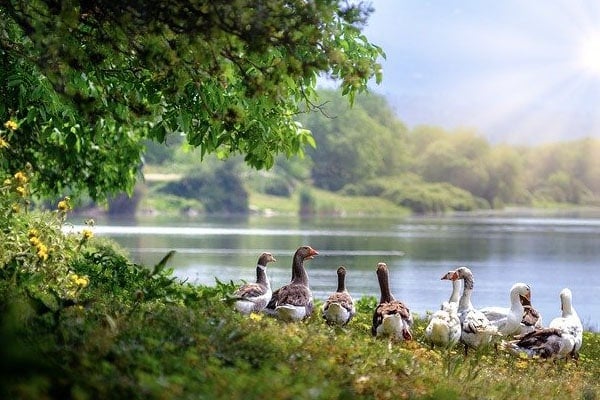
Complex societies or multi-level societies are social systems often seen in mammals. It is usually characterized by a large organized population with different hierarchies and every member playing its part.
Researchers initially thought that only those who have big brains, mainly mammals, can manage to have such a social system. This is primarily because these animals can easily remember who belongs in a specific group.
But surprisingly, even small-brained animals like birds are capable of having these complex societies, which somehow helps increase their chance of survival.
Factors That Contribute To Birds’ Complex Societies
How do birds form complex societies?
There are three factors that may contribute to the formation of these:
- Hierarchy
- Food Resources
- Habitat
How? Well, that’s exactly what I will explain below.
Dominance Hierarchy
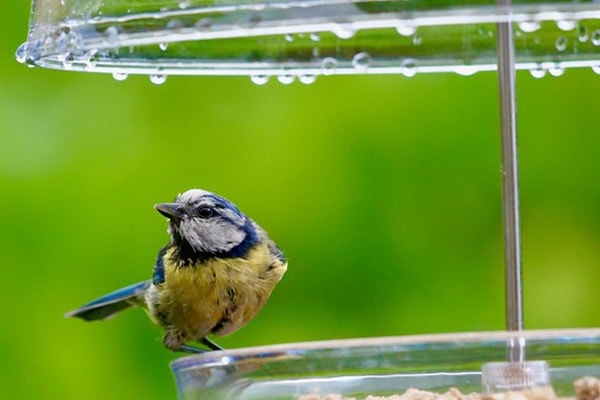
Many bird species are found to practice dominance hierarchy or also called the pecking order. It’s when one bird tends to stand above the rest. It’s a call of power that often comes with many benefits.
Dominance hierarchy often shows in flocks of birds: either in flocks formed in winter or birds staying together the whole year. It’s also exhibited in bird feeders whenever bird species compete with each other for food.
But what exactly makes a bird dominant over another bird? There are six factors:
- Gender: The number one factor that makes some birds dominant over another bird is their gender. For example, a male bird is naturally dominant over a female bird.
You might think it’s the other way around because it’s the males who form courtship displays. However, it’s been found that courting is actually a sign of dominance. This also makes the female submit to the male she chose.
If you can also observe, females are the ones who build the nests and incubate the egg alone without any help from the males. And for polygamous birds, males often just leave the female birds to find another mate.
However, there are cases where females are the dominant ones, but this is usually influenced by another factor, like the bird plumage
- Bird Plumage: As mentioned above, bird plumage is another factor in this dominance hierarchy.
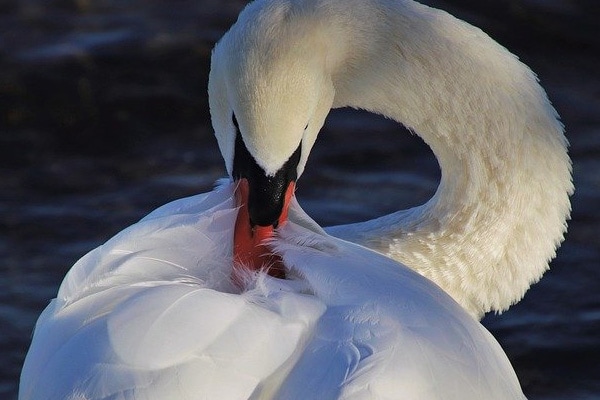
If you have probably noticed, male birds are always brighter in color than females. They’re usually the ones that are more attractive in terms of color, and this is probably because they’re the ones doing the courtship.
However, there are certain bird species where females tend to be more colorful than males, making them more dominant. A great example of this is the Phalarope. The females are more colorful, and they’re also the ones who perform the courtship.
Another way bird plumage can influence bird dominance is between same-gender birds.
For example, the brighter the color of a male bird, the more dominant he is from other males. This is because female birds see them as more attractive, hence increasing their chances to get a mate.
- Age: Apart from color and gender, age is also another factor.
Apparently, older birds are automatically dominant over younger birds. This is mainly because older birds generally have more experience than younger ones. Older birds are also generally larger, which easily intimidates the young birds.
If we base it on the birds’ plumage, too, younger birds always have duller colors, and it will take time before their feathers turn bright.
Gender also doesn’t matter as older females will be generally dominant over younger males.
- Strength: Another factor would be the birds’ strength. Generally, this is gained through experience, and older birds are most likely stronger than others.
- Size: Larger birds generally dominate over smaller ones, which is often influenced by age and gender. As you can see, males are generally larger than females, and older birds are larger than smaller ones.
However, in cases where females are larger than males, they are the ones dominant, too. The same happens with bird species. If a bird species is larger, he tends to dominate over his competition, which is usually observed in bird feeders.
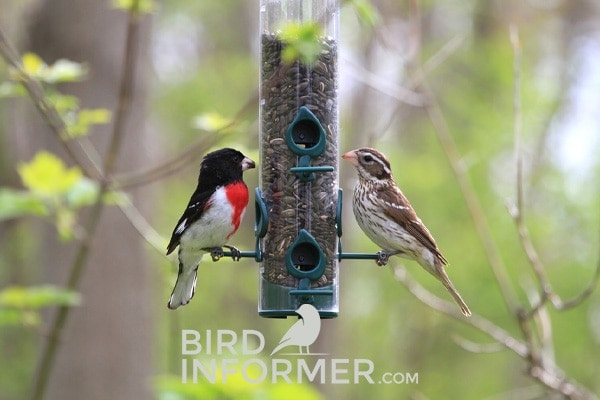
- Bird Species: Lastly, we have bird species. It’s already a given that larger bird species are more dominant. However, there are cases where small birds can dominate over larger ones. Take the doves, for example.
Doves are peaceful in nature, that even if they appear larger, they can easily be beaten by woodpeckers and hummingbirds when competing over bird feeders.
Another example is the Eastern Bluebirds. Even if they’re bigger, downy woodpeckers can still easily dominate over them, mainly because Downies are generally more aggressive and are built for harder stuff like smashing their heads on tree trunks.
What are the benefits of being dominant?
But, why exactly is dominance essential for a group of birds.
Well, this is most likely because being dominant offers one bird great benefits. They are generally more successful in finding food and mating.
Birds in higher ranks tend to have better access to food resources. They get to be the first to choose territories, thus having the greater chances to pick the best one with many food sources around.
In bird feeders, dominant birds tend to get more food than subordinates. This is because most subordinate birds have to wait until the dominant birds are done with the feeders.
Most of the time, when it’s the subordinates turn to forage, not much is left. Or if there is, these are already sometimes leftovers.
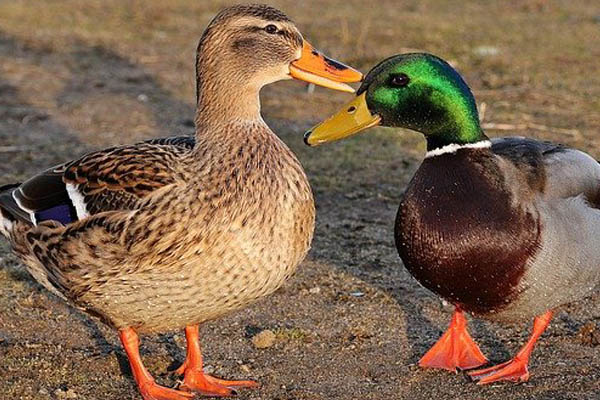
This is the same with mating.
Dominant males are always chosen over subordinate males. And sometimes, dominant males only court dominant females, leaving subordinate birds with each other. In choosing nest sites, dominant birds get to choose first, too.
Because of this, there’s very little reproductive success between subordinate birds.
Are there any disadvantages?
Apparently, yes.
No matter how dominant a bird is, there are still a few disadvantages. The first is that they are most likely to get stressed and get tired. Dominant birds continuously engage in activities to maintain their status, which means they should eat more to maintain their physical condition.
As years pass of staying dominant, their bodies are no longer functioning the same. They eventually get weaker. This is why sometimes, even if the bird is old, he most likely just becomes a subordinate when he’s weak.
Food Resources
Food is vital to all living creatures in this world, and that includes birds.
As season changes, food supply varies, too. There are times when bird food is abundant and when food is scarce, and birds had no choice but to adapt.
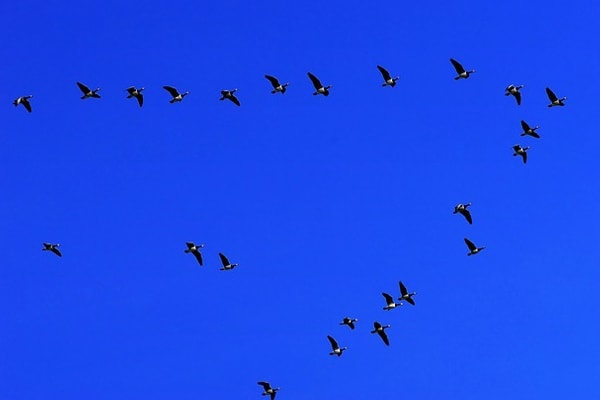
One way they do this is by migrating. And not one bird migrates alone. They form flocks, ensuring that each of them is protected and has enough energy for travel. There are even moments when different bird species gather to forage for food in winter. No aggression, just birds wanting to survive.
But other than this, there have also been several records as to how birds help each other find food:
- There are some cases when dominance hierarchy plays a role. It’s when subordinate birds bring food for dominant birds. However, dominant birds aren’t obliged to accept gifts and may sometimes end up chasing the subordinates away.
- There are also cases when a bird brings food to injured birds or weaker birds. In an experiment done with magpies, a bird given many food resources would be happy to share food with others in a condition that they don’t have food with them or are not capable of getting one.
- There are also cases when males bring females food to increase reproductive success.
In other words, when food is low, and birds need to survive, they help each other, regardless of the status. Even different bird species cooperate and forage together just to get through winter.
Habitat Structure
Habitat Structure has also been found to affect a birds’ social system. As we know, birds move around, depending on weather conditions and food resources.
During migration, several birds fly long distances and yet manage to reach the same breeding and wintering areas every year. What’s even more impressive is that groups and clusters formed remain consistent.
Even if they do socialize with other bird species, birds seem to always return to the same group. They remember their own territory, and they don’t easily get confused and join other bird groups.
Studies have been done, and there’s still no clear explanation of how birds manage to maintain social structure even with years of migration. But it does seem that birds have their own way of communicating.
How Complex Societies Help With Birds’ Survival
Complex societies help birds in many ways. If we base it on the factors above, the kind of social structure they have actually helps them survive.
How? Let’s take a look at each:
Dominance Hierarchy
Dominance hierarchy may not look fair. However, it is necessary as it somehow decreases competition. With only the strongest birds fighting each other for ranking, subordinates have a higher chance of survival.
This also increases reproductive success for birds. If dominant males mate with dominant females, the new breed of birds is generally stronger, increasing chances of survival, too.
In other words, this dominance hierarchy somehow saves birds from extinction. It’s somehow useful for long-distance migratory birds.
Because long-distance migratory birds are prone to dying during travel, they do need to breed more to somehow increase their numbers again. That’s why it’s also crucial that reproduction is successful.
This responsibility usually goes to dominant birds.
Subordinates, on the other hand, get to reserve their energy and somehow help dominant birds find food sources when they’re too weak. Eventually, they might manage to get up the ranks and become the dominant ones.
Food Resources
Birds need to eat, and since the birds’ social structure allows them to help each other, their chances of survival increase, too.
It may be weird how birds who are aggressive during summer socialize during winter. However, it’s a great survival tactic. With food resources being limited, foraging together, and sharing food sources, many birds can get through winter.
Habitat Structure
Birds form flocks during migration, a great way birds are found to adapt to nature. Since travel is risky, the birds need to work together to survive and reach their habitats. That’s why they stay on their own flocks so that they can always go back to the right breeding and wintering grounds.
However, aside from these three, there’s one more way that birds survive by keeping such a social structure…
And that is by protecting themselves from predators.
Predators are everywhere, and one of the reasons birds flock together is to protect themselves.
Even while in their own breeding territories, they continue to stay close together. So that when predators come, one bird can alert the other to fly away.
The same thing when they are foraging together for food.
By staying close together, they can look out for each other while keeping their bellies full. It also helps confuse predators which bird to chase, giving birds a higher success rate of escaping.
Birds That Exhibit Complex Societies
Now that we’ve discussed complex societies, it’s essential to know that not all birds have one. In fact, this bird behavior is not as well-researched yet. However, certain birds have been heavily studied, and one of them is the Vulturine Guinea Fowl.
Vulturine Guineafowls
The Vulturine Guineafowl is not found anywhere in America. They are birds native to Africa and are also called the Royal Guineafowl.
They feature a bright royal blue-colored body with visible black and white streaks and dots on their feathers. They have red eyes, and their beaks are black. These birds are generally found in dry areas, mainly in deserts with tall grasses, shrubs, bushes, and few trees.
The very definition of complex societies is visible in these birds.
Based on some studies, Vulturine Guineafowls can differentiate which group they belong to.
Researchers have discovered this by putting together around 18 groups of Vulturine Guineafowls in one group. And by the end of the day, the birds can split up back to their groups.
Researchers did this repeatedly, and each time, the birds have successfully split up into their respective groups. But how they managed to do so seems to remain a mystery.
FAQs
What is a complex society?
A complex society is a social structure commonly seen in mammals. It’s when animals form groups within a society, creating ranks or units to distribute resources fairly and contribute to the whole group’s survival.
What is dominance hierarchy?
Dominance hierarchy is a system where animals rank themselves from being the best in the group or the worst.
How to determine what bird is dominant?
In birds, dominance can be determined based on six factors:
- Gender
- Bird Plumage:
- Age
- Strength
- Size
- Bird Species
This also means:
- Male birds are generally dominant over females
- Brighter and more colorful birds are more dominant
- Older birds are dominant over younger ones
- Stronger birds are more dominant
- Larger birds are generally dominant over smaller ones
- Certain bird species are dominant over others
But there are certain exceptions, like when some female birds are dominant over males. Or when stronger younger male birds dominate over weaker older male birds.
Why is it called pecking order?
Another term for dominance hierarchy is pecking order. This is mainly because birds in higher ranks can peck birds lower than them without any problems, and birds in the lower level wouldn’t do anything when birds higher than them peck them.
Why do birds compete?
There are many reasons why birds compete, but one of the most common reasons would be resources. Stronger birds tend to have greater chances to acquire more food, get a mate, and even a good nesting ground.
Why are complex societies important to birds?
Complex societies somehow have a significant influence on the birds’ survival.
The way the birds’ social structure looks right now, it’s very clean and ensures that they’re protected, and everyone’s needs are met. Everyone in the group gets to eat, have a place to stay, and are protected from predators.
Even subordinate birds benefit from the structure as they can conserve more energy. They also play a role in ensuring dominant birds’ reproductive success.
Final Thoughts About Bird Complex Societies
There is still so much to learn about complex societies in birds. Until now, everything is up to observation and the “how” is still unanswered.
However, there’s one thing for sure:
No matter how these “small-brained” creatures managed to form such a social structure, it’s highly effective, and it definitely works. Because in situations where it’s harder to survive on their own, they get to help each other by sticking in these societies they made.

